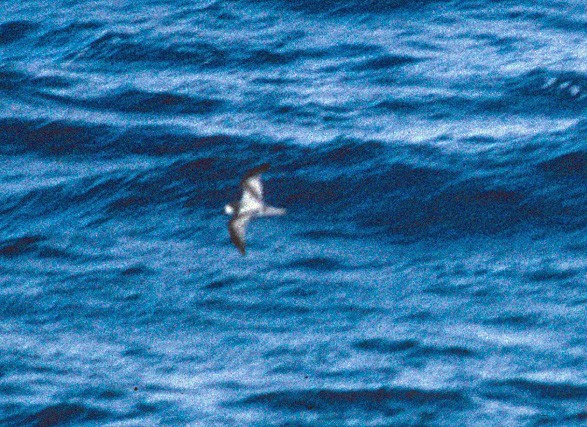Gould's Petrel
A species of Gadfly Petrels Scientific name : Pterodroma leucoptera Genus : Gadfly Petrels
Gould's Petrel, A species of Gadfly Petrels
Botanical name: Pterodroma leucoptera
Genus: Gadfly Petrels
Content
Description General Info
 Photo By Don Roberson
Photo By Don Roberson Description
Gould's petrel is a small gadfly petrel, white below and dark brown and grey above. The species is classified within the subgenus Cookilaria, all members of which have a dark M pattern across the upper wings. Gould's petrel has long narrow wings, a short rounded tail and the head is noticeably dark, with a white forehead and face. Gould's petrel is 30 cm in length with a wingspan of 70 cm and weighs 180–200 g. Males are slightly larger than females. 
Size
30 cm
Nest Placement
Burrow
Feeding Habits
Gould's Petrel primarily consumes small cephalopods and fish. With substantial variations in foraging success, gould's Petrel's feeding behavior includes enduring long periods without food during incubation shifts.
Habitat
Gould's Petrel occupies marine and broadly pelagic habitats, preferring to remain at sea away from mainland areas, gathering only on oceanic islands during breeding seasons. The species nests in forests and gullies, often within palm-rich vegetation, maintaining a strong affinity for steep and rugged coastal landscapes.
Dite type
Piscivorous
General Info
Feeding Habits
Bird food type
Distribution Area
Gould's petrels spend most of their life at sea and come ashore only to breed. Prior to the 1990s it was thought that the Australian subspecies of Gould's petrel bred only on Cabbage Tree Island off Port Stephens in New South Wales. After the discovery of a small number of breeding pairs on neighbouring Boondelbah Island, translocation of 200 chicks in 1999 and 2000 has established a small satellite colony which breeds in artificial nest boxes that were installed prior to the first translocation . In December 2009, just one month after it had been confirmed that rabbits had been eliminated from Cabbage Tree Island, one single Gould's petrel was found incubating an egg on another nearby island, Broughton Island. Today, the nominate subspecies breeds on at least five islands off New South Wales (Cabbage Tree Island, Boondelbah Island, Broughton Island, Little Broughton Island, and Montague Island). The New Caledonian subspecies breeds on New Caledonia on steep forested valleys on the central mountain chain, from 350–500 metres above sea level between Mountains Dzumac and Poya. There is also a small colony on Raivavae in French Polynesia. Both subspecies forage in the Tasman Sea during the breeding season and may venture as far west as the Indian Ocean south of south-western Western Australia before laying. After breeding, Gould's petrel migrates to the central (P. l. leucoptera) and eastern (P. l. caledonica) Pacific Ocean. Gould's petrels (of unknown subspecies) were sighted in December 1994 in waters south of Western Australia. It is deduced that these were not breeding birds, because in December breeding birds are incubating (see Life history below), and these waters are too far from the breeding colonies for a foraging trip. 
Species Status
Active conservation management for the Australian subspecies of Gould's petrel has been so successful that the conservation status of the subspecies has been down-graded from endangered to vulnerable. In 2010, the total population of the Australian subspecies was estimated to be 2,500 individuals and increasing. At the same time, the population of the New Caledonian subspecies was estimated at 10,000 individuals and decreasing. However, this number is no more than an estimate and scientists do not have high confidence that it is correct. The New Caledonian subspecies is also classified as vulnerable because of its restricted geographic breeding range. 

 Photo By Don Roberson
Photo By Don Roberson Scientific Classification
Phylum
Chordates Class
Birds Order
Albatrosses and Petrels Family
Shearwaters and petrels Genus
Gadfly Petrels Species
Gould's Petrel